Rat Rods
You have to love rat rods they are truly a unique American phenomena and have burst on to the car scene in a major way. They have been around for a long time but have only recently gained popularity as it seems everything belonging to outsider culture moves into the mainstream. Tattoo art, gothic, outsider art, biker, etc. are all more mainstream than ever. Popular culture is decidedly excited by such things. A good example is the explosion of Ed Hardy everything worn by all ages.
What is a rat rod?
A rat rod is simply a custom car that is made for driving and hanging out with friends. Rat rods aren't ultra glossy show cars. Instead a rat rod is an "unfinished" street rod that is intentionally left a bit rough around the edges.
You might be able to recognize most rat rods by their flat black or gray paint but there are no set rules as to what makes a rat rod, a rat rod. I can't exactly define a rat rod, but I know one when I see one.
These barebones cars are often hard to drive no power steering or power brakes, loud, etc.
Back in the 50's just about all street rods would be called rat rods in modern times, but nowadays the street rod has become a bit "stuffy". Street Rods and Hot Rods are more of a "garage dweller" too afraid to come out at night because it's multi million dollar paint might get scratched. Hence.... the rat rod! A rat rod isn't afraid of a few scratches, heck scratches only add more character. These buckets of bolts are loud, smoky, and ready to burn up the streets.
Originally a counter-reaction to the 50s "Hot Rod", a label recently applied to undriven cars and super high priced "customs". The "Rat Rod"'s beginning was a throwback to the Hot Rods of the earlier days of Hot Rodding, built to the best of the owner's abilities and meant to be driven. Rat Rods are meant to loosely imitate in form and function, the "Traditional" Hot Rods of the era. Biker, greaser, rockabilly, and punk culture is often credited as influence that shapes of Rat Rodding.
The typical rat rod (an early 1920s through 1950s coupe or roadster): Early (pre-World War II) vehicles often have their fenders, hoods, running boards, and bumpers removed. The bodies are frequently channeled over the frame, and sectioned, or the roofs chopped for a lower profile. Later post-war vehicles are rarely constructed without fenders and are often customized in the fashion of Kustoms, leadsleds, and lowriders. Maltese crosses, skulls, and other accessories are often added. Chopped tops, shaved trim, grills, tail lights, and other miscellaneous body parts are swapped between makes and models. Most, if not all of the work and engineering is done by the owner of the vehicle. Recently, the term "Rat Rod" has been used to describe almost any vehicle that appears unfinished or is built simply to be driven, whether or not the vehicle would have been customized or even existed during the 50s.
Paint and Finish
Typical "rough" finish of Rat Rods. Many Rat Rods appear unfinished with primer paint jobs being common. Other finishes may include “natural patina†(the original paint with rust and blemishes intact), a patchwork of original paint and primer, or bare metal with no finish at all in rusty or oiled varieties. Many rat rods also have free hand pinstriping done by the owners with a pinstriping brush. Contrary to tastes of many car builders, rust is often acceptable and appreciated by a Rat Rodder.
Interior
Interiors of rat rods vary from fully finished to a spartan, bare bones form. Mexican blankets and bomber seats form the basis of many rat rod interiors. Most are designed to be functional without many comforts although this will vary with the owner’s taste.
Drive Train
Though a variety of engines may be used, the most common are to be found in a Rat Rod are Flathead V8's, early Chrysler Hemi engines, or more modern Small Block V8's from any manufacturer, especially Chevrolet. It is not uncommon to see straight-8s straight-6s, straight-4s, V6s or even diesel engines. These engines may exhibit varying displacements and modifications. Most Rat Rods are rear wheel drive, with an open driveline. The rear-ends are typically passenger vehicle pieces, as are the transmissions. The Ford Banjo rear-end is popular, as is the "Quickchange" type as used in many early hot rods.
Suspension
A beam axle is commonly accepted as the only type of front suspension that will look right when exposed without fenders on a vehicle with open front suspension. Independent front suspension is discouraged, Most Rat Rods use a 1928-1948 Ford I beam axle with a transverse leaf spring. Although any solid axle is acceptable, the Ford axle is preferred due to the availability of spare parts. Springs vary from transverse, parallel and coil setups in the front and rear. Parallel is not seen as frequently as the more common single-spring transverse setup, though both are used commonly. Coil springs are often deemed unsightly without fenders, but are still occasionally seen.
The December 1972 issue of Rod & Custom Magazine was dedicated to the beater, a low-budget alternative to the over-polished, slickly-painted, customized early car. The beater could easily be considered a progenitor of the rat rod. However, owners of these beaters often had a high-dollar machine sitting in their garage: no expensive upholstery, primered if painted at all, no chromed and polished Corvette/Jaguar rear ends. As with many cultural terms, there are disputes over the origin of the term "rat rod". Some say it first appeared in an article written in Hot Rod Magazine by Gray Baskerville about cars that still sported a coat of primer. Some claim that the first rat rod was owned by artist Robert Williams who had a '32 Ford Roadster that was painted in primer. Although the term likely started out as derogatory or pejorative (and is still used in this way by many), members of the subcultures that build and enjoy these cars have adopted the term in a positive light.
a couple of rat rod short movies:
A few images of some very cool rides:
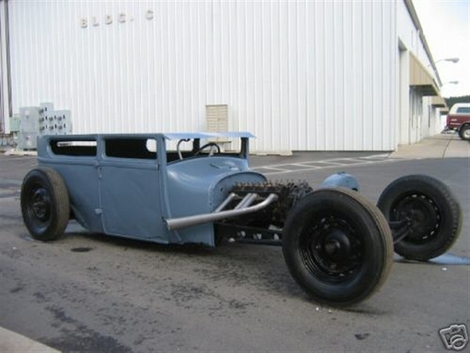
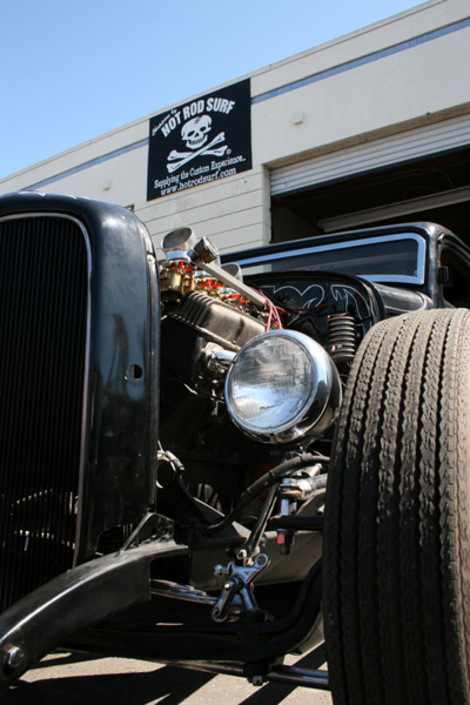

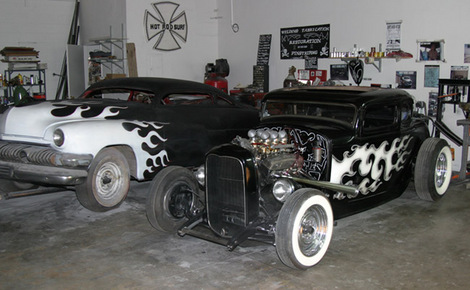
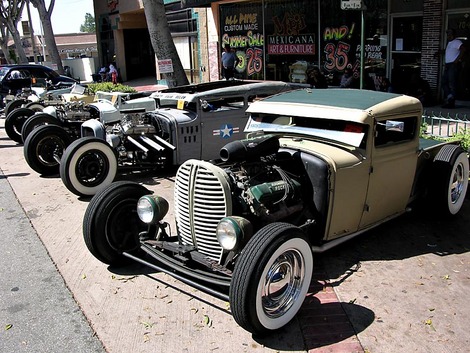
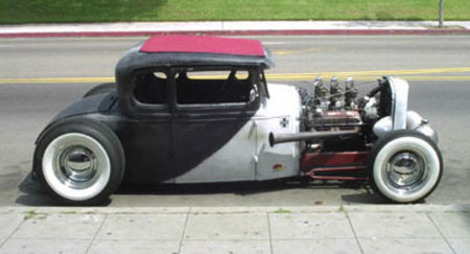
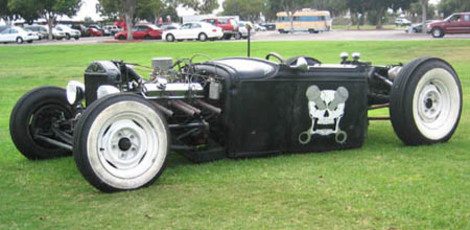
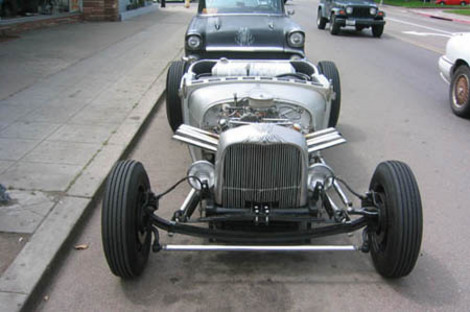
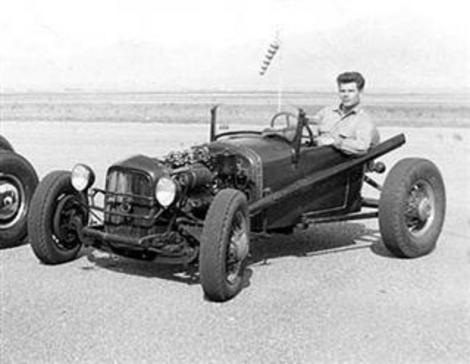
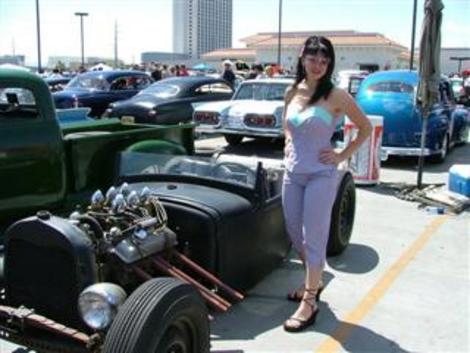
The rat rod culture is as unique as the cars these enthusiast build, drive, and show. As the scene grows people are expressing amazing creativity and ingenuity in the rides they build. I am considering a build myself - it has captured my imagination in a big way.
Here is the project I am going to undertake after looking for a great platform with which to add too!
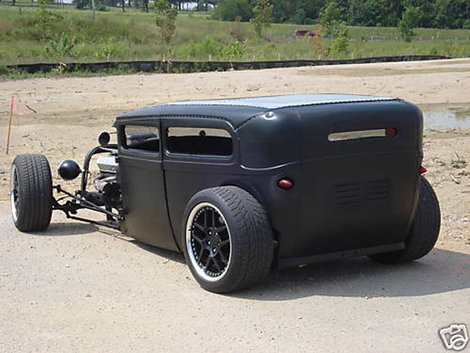 It's a 1929 Ford chopped and channeled 8" - it is low and loud with a worked over 350
The tail lights are from caddy and frenched in.
It's a 1929 Ford chopped and channeled 8" - it is low and loud with a worked over 350
The tail lights are from caddy and frenched in.
Posted 07/09/08 @ 01:06 PM | Tags: Ratrods, Rat rods, Hot rods, beaters, Street rods, Custom street rods, my rat rod, 1929 Ford rat rod